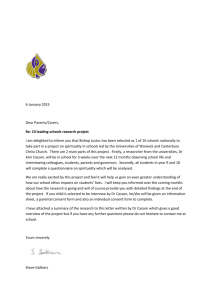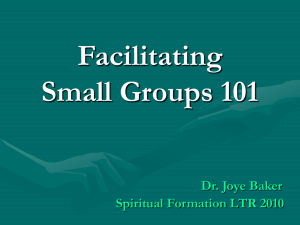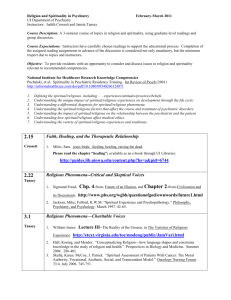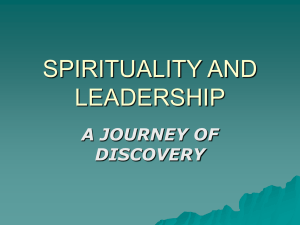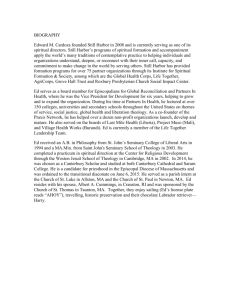Spiritual Development WMD
advertisement
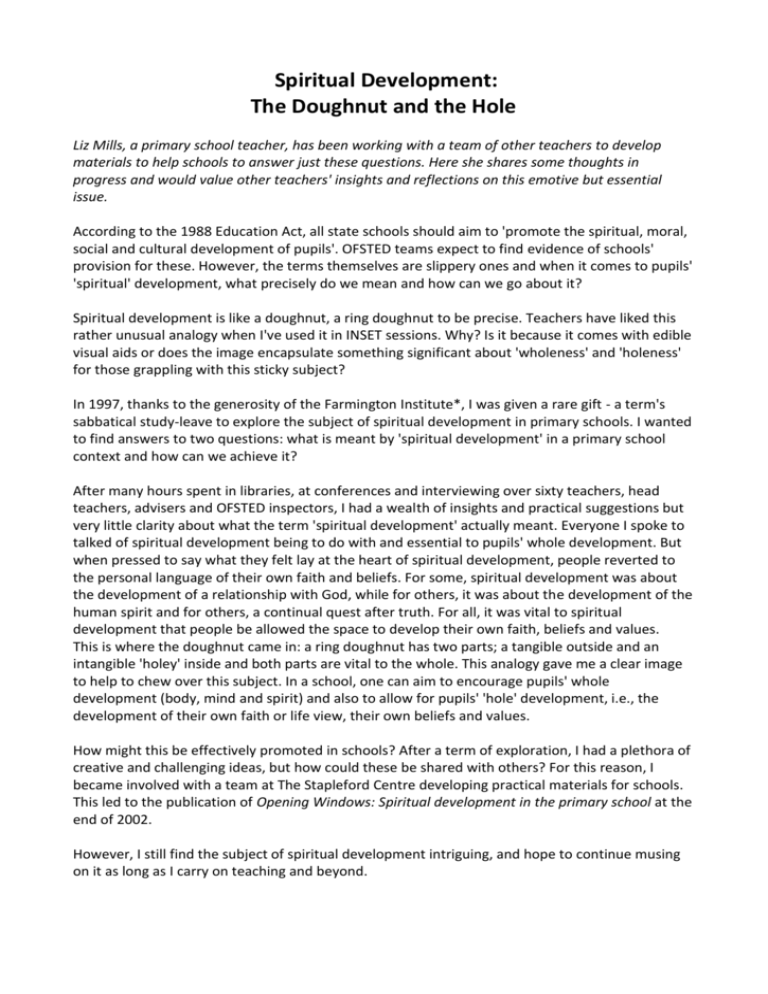
Spiritual Development: The Doughnut and the Hole Liz Mills, a primary school teacher, has been working with a team of other teachers to develop materials to help schools to answer just these questions. Here she shares some thoughts in progress and would value other teachers' insights and reflections on this emotive but essential issue. According to the 1988 Education Act, all state schools should aim to 'promote the spiritual, moral, social and cultural development of pupils'. OFSTED teams expect to find evidence of schools' provision for these. However, the terms themselves are slippery ones and when it comes to pupils' 'spiritual' development, what precisely do we mean and how can we go about it? Spiritual development is like a doughnut, a ring doughnut to be precise. Teachers have liked this rather unusual analogy when I've used it in INSET sessions. Why? Is it because it comes with edible visual aids or does the image encapsulate something significant about 'wholeness' and 'holeness' for those grappling with this sticky subject? In 1997, thanks to the generosity of the Farmington Institute*, I was given a rare gift - a term's sabbatical study-leave to explore the subject of spiritual development in primary schools. I wanted to find answers to two questions: what is meant by 'spiritual development' in a primary school context and how can we achieve it? After many hours spent in libraries, at conferences and interviewing over sixty teachers, head teachers, advisers and OFSTED inspectors, I had a wealth of insights and practical suggestions but very little clarity about what the term 'spiritual development' actually meant. Everyone I spoke to talked of spiritual development being to do with and essential to pupils' whole development. But when pressed to say what they felt lay at the heart of spiritual development, people reverted to the personal language of their own faith and beliefs. For some, spiritual development was about the development of a relationship with God, while for others, it was about the development of the human spirit and for others, a continual quest after truth. For all, it was vital to spiritual development that people be allowed the space to develop their own faith, beliefs and values. This is where the doughnut came in: a ring doughnut has two parts; a tangible outside and an intangible 'holey' inside and both parts are vital to the whole. This analogy gave me a clear image to help to chew over this subject. In a school, one can aim to encourage pupils' whole development (body, mind and spirit) and also to allow for pupils' 'hole' development, i.e., the development of their own faith or life view, their own beliefs and values. How might this be effectively promoted in schools? After a term of exploration, I had a plethora of creative and challenging ideas, but how could these be shared with others? For this reason, I became involved with a team at The Stapleford Centre developing practical materials for schools. This led to the publication of Opening Windows: Spiritual development in the primary school at the end of 2002. However, I still find the subject of spiritual development intriguing, and hope to continue musing on it as long as I carry on teaching and beyond. Most recently, when working with schools, I have used three visual images to help teachers consider how spiritual development - pupils' whole and 'hole' development - can be promoted throughout the life and work of their school. Schools can provide children with openings for spiritual development in three vital ways: WINDOWS: giving children opportunities to become aware of the world in new ways; to wonder about life's 'Wows' (things that are amazing) and 'Ows' (things that bring us up short). In this children are learning about life in all its fullness. MIRRORS: giving children opportunities to reflect on their experiences; to meditate on life's big questions and to consider some possible answers. In this they are learning from life by exploring their own insights and perspectives and those of others. DOORS: giving children opportunities to respond to all of this; to do something creative as a means of expressing, applying and further developing their thoughts and convictions. In this they are learning to live by putting into action what they are coming to believe and value. In our present result-driven educational climate, how will we know whether pupils are developing 'spiritually' through the opportunities we provide in school? Is spirituality really something one can become progressively better at with effort, perhaps as one develops intellectually or with age and experience? (In that case, surely adults should be much more spiritually developed than children?) Does the word 'development' when applied to spirituality mean growth like a plant (see graph) or is the analogy of a photograph a better one - when a photo is developed, the image that is already there is realised. Perhaps children can sometimes realise their innate spirituality more perceptively than adults? In this light a list of characteristics of spiritually developing people might be a useful guide for schools aiming to monitor their provision for pupils' spiritual development. Such a list would include traits such as curiosity, generosity, hopefulness, trust and vision, elements that children often display quite naturally and yet adults can seem to lose. (A fuller list can be found in Appendix 2 of Opening Windows.) These are my thoughts in progress on spiritual development. I'd love to hear any reflections you have on the subject. Liz Mills can be contacted through The Stapleford Centre. Opening Windows: Spiritual development in the primary school is available from The Stapleford Centre priced £8.99. Click here to go to the online bookshop. * Anyone interested in applying for similar sabbatical opportunities to consider RE-related issues should visit the Farmington Institute's website. http://www.crackingre.co.uk/htdocs/crackingre/secure/teachSupp/donut.html

